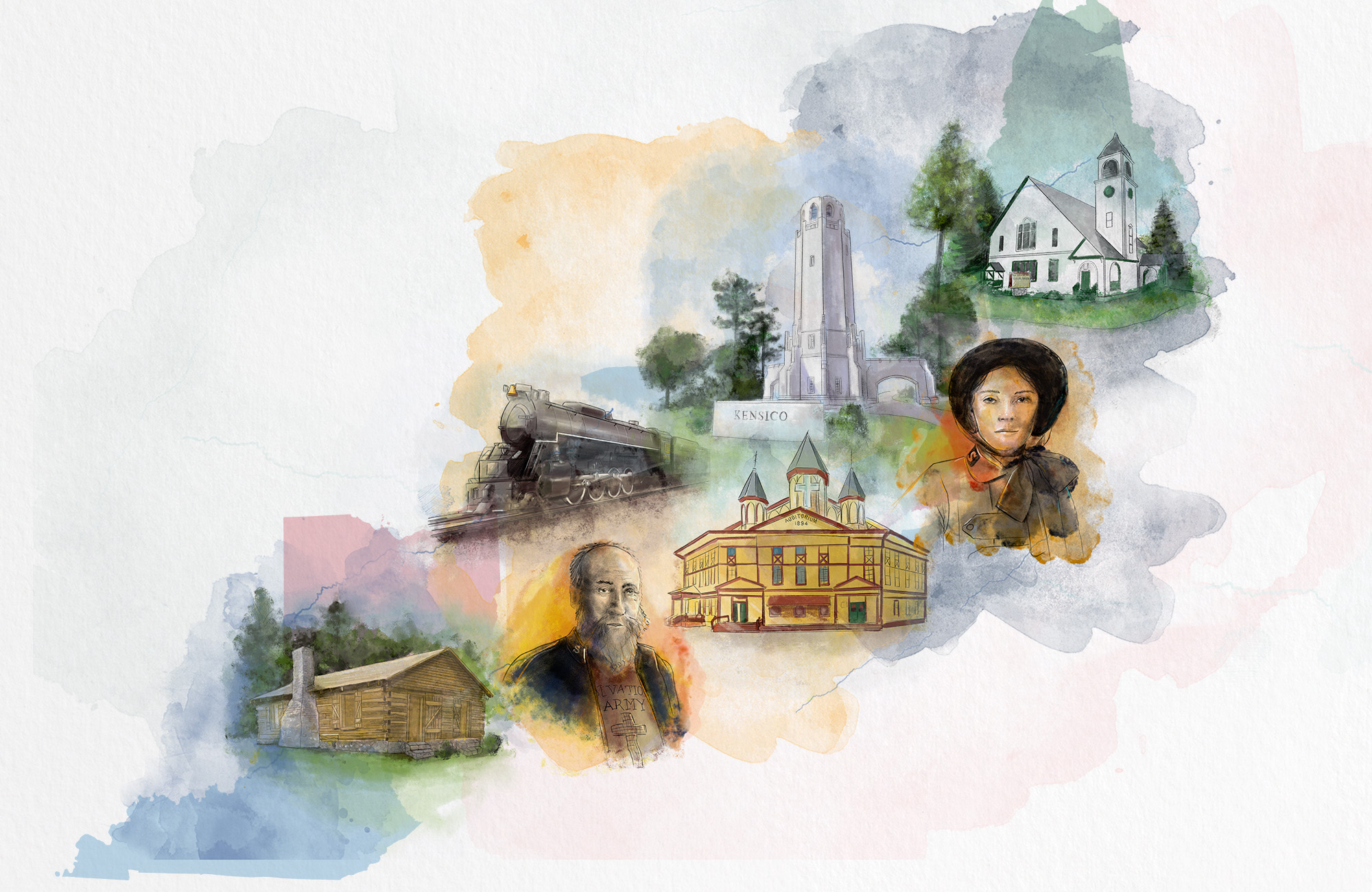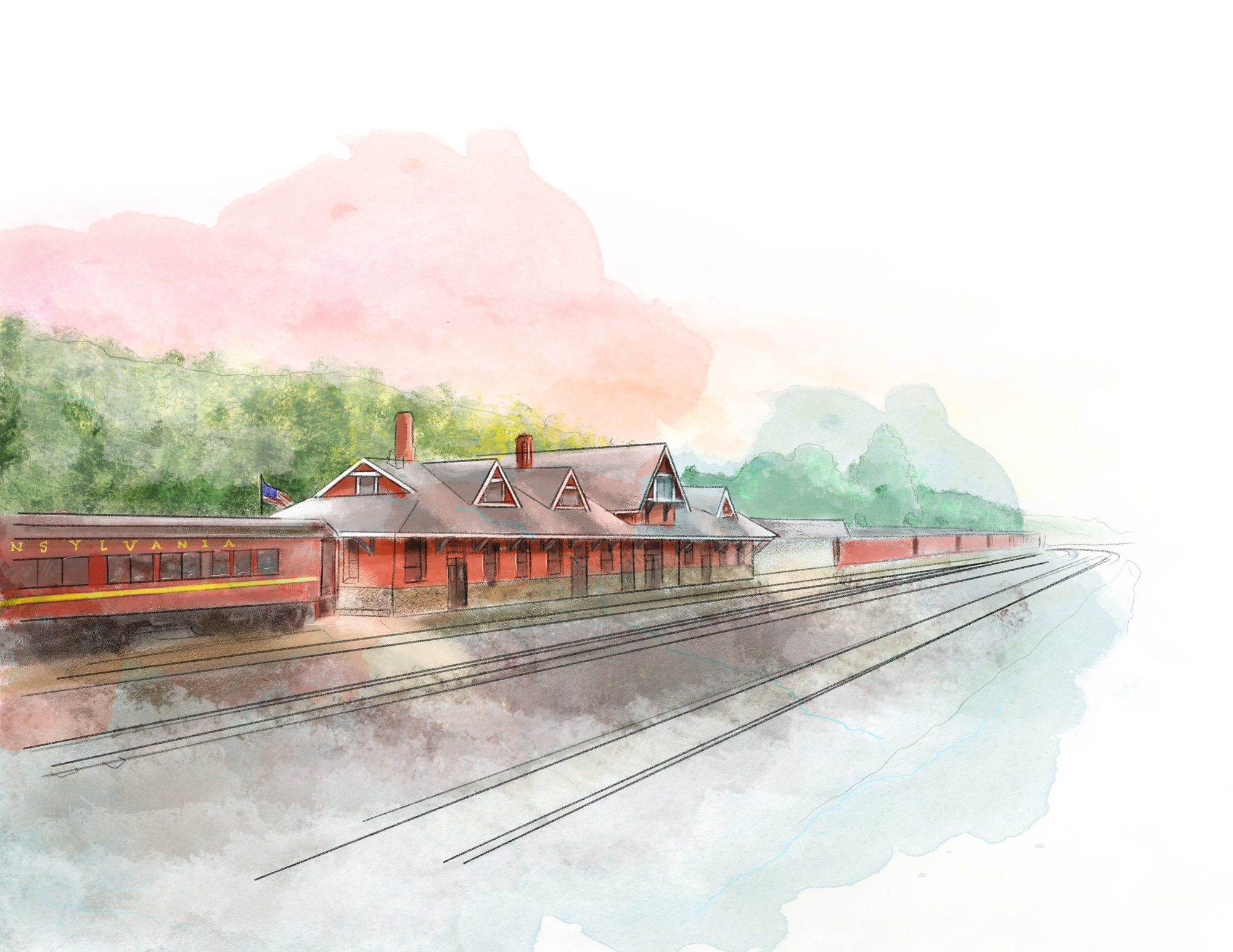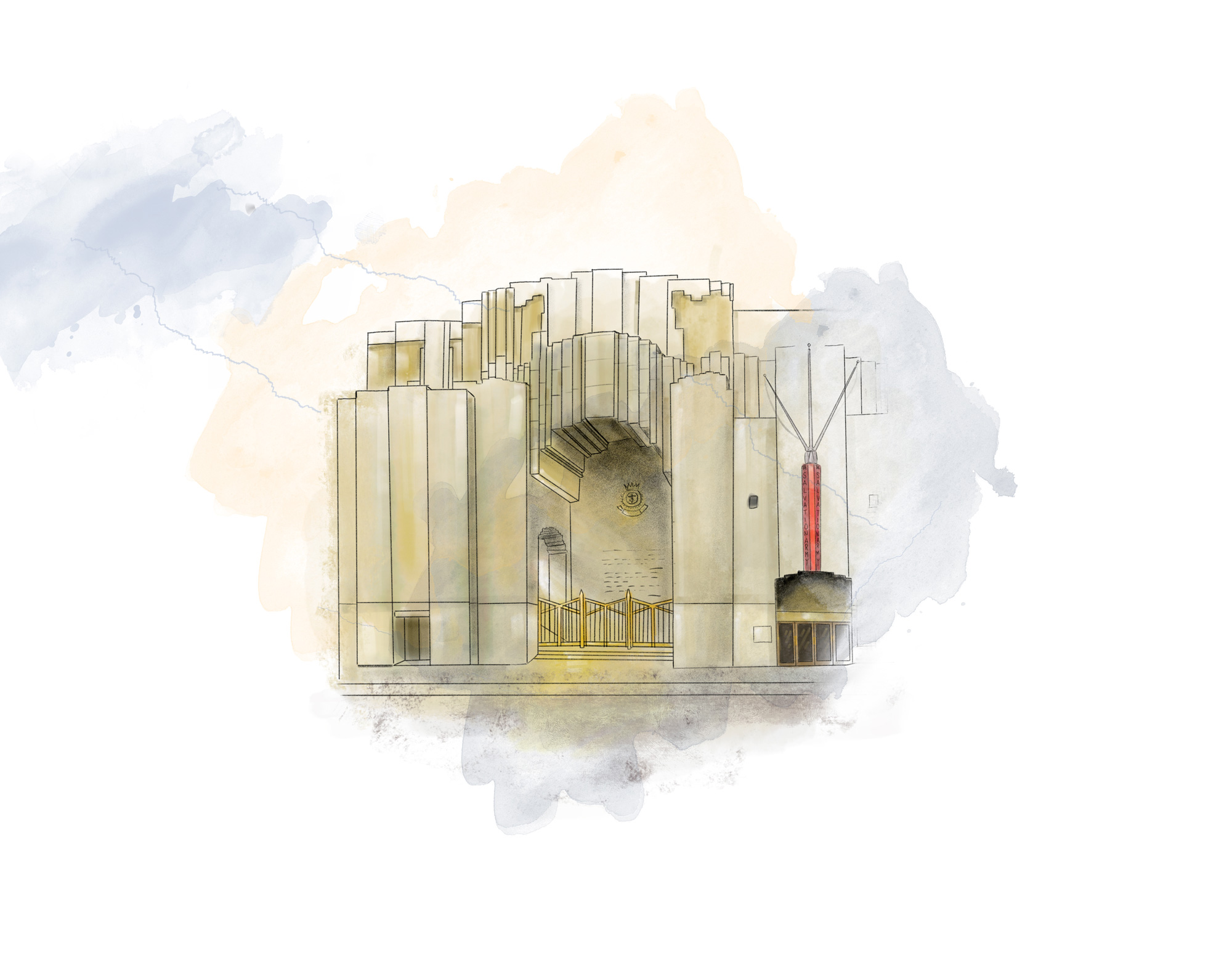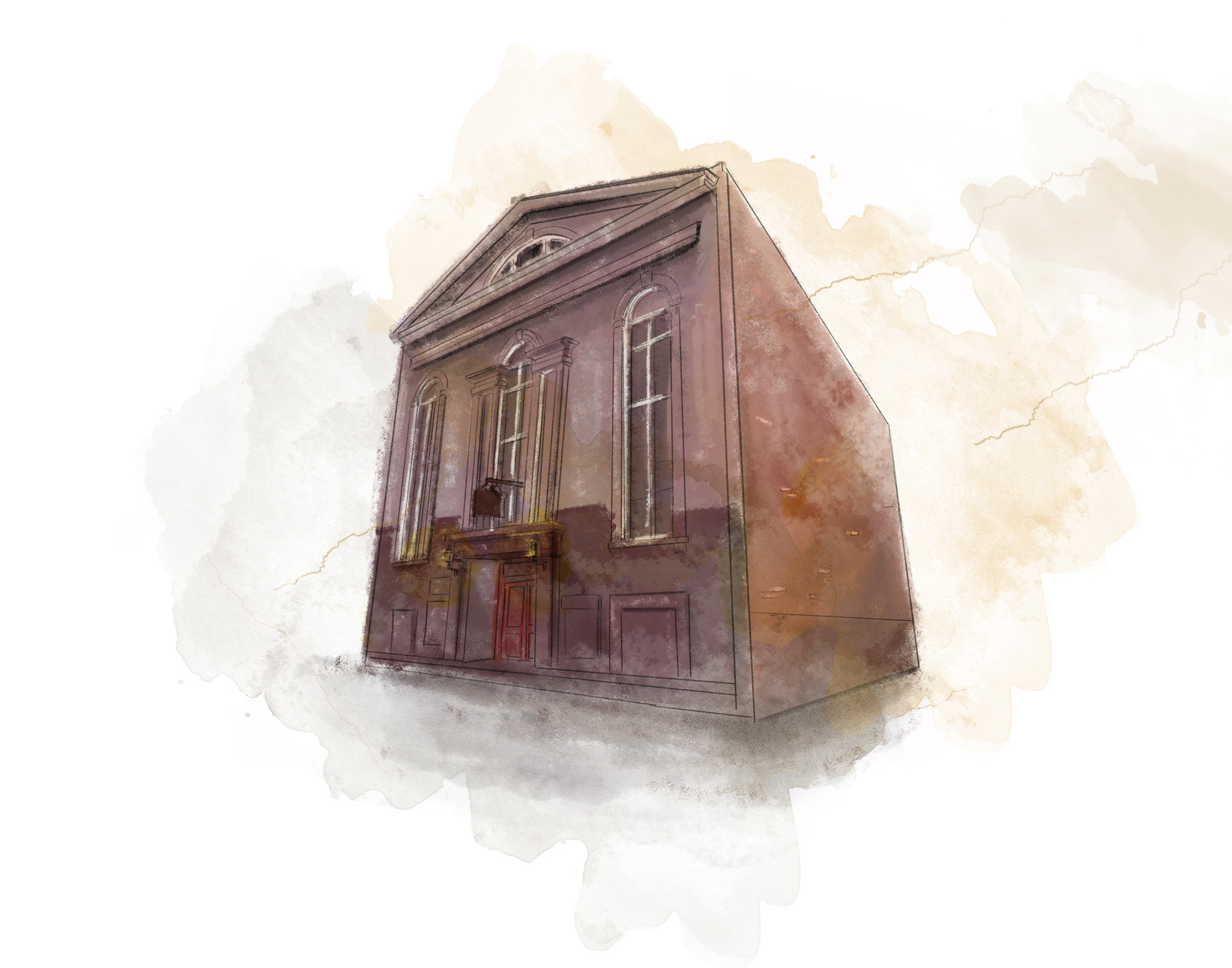A History Rooted in Faith
by Robert Mitchell

Then Samuel took a stone and set it up between Mizpah and Shen. He named it Ebenezer, saying, “Thus far the Lord has helped us.”—1 Samuel 7:12
Nestled in the woods off a rural road in Warren, Conn., is a simple monument marking the birthplace of the Rev. Charles Finney, known as the “Father of Modern Revivalism.” A plaque is imbedded in the stone that was erected by Ohio’s Oberlin College, where Finney served as president.
Finney, who was a Presbyterian minister, and a central figure in America’s Second Great Awakening, had a tremendous influence on American religion in the 19th century, which included early Salvationists. General William Booth urged officers to study Finney’s revivals, theology, and writings. He is buried at the Westwood Cemetery in Oberlin, Ohio.
The United States was founded on Christian principles brought here by English Protestants of the early 17th century. So if you like visiting historic sites that mark their influence, you will also see remnants of this country’s history.
“To understand American history, we must understand America’s religious history, as it reflects the soul of the nation,” said Steve Bussey, a Salvation Army historian.
Bussey believes that Salvationists and other Christians, and even people of no faith, should visit various religious and historic sites to better understand U.S. history and the role religion has played in shaping the country.
“A plaque is just a plaque until a story accompanies it,” Bussey says. “When the story comes, we understand the value of it. When the value comes, there is significance. When the significance is there, then we’re moved. When we’re moved, we resolve ourselves.
Rekindle the spiritual flame
“I believe we’ve lost our idealism that the world can be saved and that there can be revival or a great awakening like we saw in Finney’s time. We need to stir those embers again. We need to stoke the fire, if there’s going to be another awakening—and I believe there will be. I don’t think there is an organization better postured for a true global, spiritual awakening that is as significant, if not more significant than the first and second great awakenings, than The Salvation Army. We just need to begin to believe it.”
As people begin to consider and plan vacations, Bussey is a firm believer that there’s plenty to see—often free or at low cost—that will enrich a family’s faith. “These trips are about going back to see what God has done in the past and to remember that if God did it then, He can surely do it today,” Bussey said.
Where to start
Bussey says that two good places to start are The Red River Meeting House in Adairville, Ky., and the Cane Ridge Meeting House near Paris, Ky., both major sites of the Second Great Awakening.
Revival broke out at Red River in 1799 and 1800, fueling the awakening. Today, the grounds of the Red River Meeting House include a 1994 replica of the original structure and a 400–plot graveyard with some markers dating to the early 1800s. A stone monument marks the spot of the original church, built between 1789–1792. The Cane Ridge Meeting House is about 200 miles north of Adairville in Bourbon County near Paris, Ky. Visitors can see the original 1791 meeting house, which is completely enclosed inside a new super-structure finished in 1957. The original meeting house is touted as the largest one–room log building in North America.
“I think returning to places like the Red River Meeting House helps us see the rock from which we are hewn,” Bussey said. “Everything we are built upon as The Salvation Army, our identity and purpose, can be traced back there. The Red River Meeting House is one of the most import-ant places that nobody knows about.
“It’s the Red River Meeting House, which lights the fuse that causes the explo-sion of Methodism. What happens is that American revivalism, fused with Wesleyan perfectionism, becomes the prototype for most of our revivalists. It’s the most forgotten and the most important place in our entire history as The Salvation Army. When I trace everything back in the United States, I trace it back to that house. It’s the most underrated, forgotten part of church history, but the most pivotal for early religion in America.”
The Abraham Lincoln Birthplace National Park is about halfway between the meeting houses in Hodgenville, Ky. where you can see the Lincoln family Bible.
Other Kentucky hotspots ripe for a visit would be the Ark Encounter in Williamstown, Ky., the Creation Museum in Petersburg, Ky., near Cincinnati, Ohio, and Asbury University in Wilmore, Ky. The school is named after Francis Asbury, a 19th century circuit rider who took the gospel on horseback to the frontier.
Several Salvationists have attended Asbury, which was the site of the Asbury Revival in 1970 and another “outpouring” of the Holy Spirit earlier this year when a simple chapel service went on for days.
Ohio is also home to plenty of religious history, including the Westerville History Museum just north of Columbus. The museum features a collection on the Anti– Saloon League, which played a major role in the temperance movement The Salvation Army joined. The league’s crusade against the manufacture, sale, and consumption of alcohol eventually led to the Prohibition Amendment to the U.S. Constitution.

Dennison Railroad Depot Museum in Ohio
The Dennison Railroad Depot Museum in Dennison, Ohio, tells the story of how The Salvation Army fed troops being transported across the country during World War II. The war necessitated the largest rail transport of troops in U.S. history and the trains stopped in rural Dennison, where Salvation Army volunteers organized the canteen and fed the troops. The museum features photos of the canteen workers and several displays and artifacts from The Salvation Army’s work.
A dedication stone marks the 1872 beginnings of The Salvation Army in Cleveland, Ohio. This outpost of the–then Christian Mission operated from 1872–1876, and became The Salvation Army in 1883. British cabinetmaker and lay preacher James Jermy, who was of mixed race and a protégé of Founder William Booth, and James Fakler, a local African American Methodist pastor, held open–air meetings in front of saloons and preached in church. They also published the Mission Harvester magazine. In Philadelphia, visitors can see a plaque honoring Eliza Shirley, who officially began the Salvation Army’s work in the city of Brotherly Love.
The plaque reads: “The first U.S. corps was opened here on Oxford Street by 17– year–old Eliza Shirley in 1879. She came from England, assigned by the founder, William Booth. This organization would become the largest private charity in the U.S., giving spiritual and social help to the needy.”
The building, which reportedly was used as a hospital during the Civil War and a chair factory just before Shirley and her family took it over, still houses a Salvation Army corps at 350 W. Oxford St. in Philadelphia.
The Eliza Shirley House, a homeless shelter in Philadelphia, is named for the Salvationist pioneer.
Central Pennsylvania is home to several Moravian cemeteries. Buried in the Moravian Cemetery in Bethlehem is the Rev. David Nitschmann, who sailed from Europe to Georgia with John and Charles Wesley.
The Moravians, German Protestants and followers of martyr Jan Hus, are widely acknowledged as the first Protestants. The pietism of personal faith they advocated influenced the Wesleys and the Methodism that was a forerunner of The Salvation Army.
Early beginnings in New York
Up the East Coast in New York Harbor, tourists can see a plaque honoring George Scott Railton and seven women officers nicknamed the “Hallelujah Lassies,” who landed in New York in 1880 and began The Salvation Army’s work in America.
Railton and the “lassies” built on the ministry the Shirley family was doing in Philadelphia and started the work in Newark, N.J.
The granite and bronze plaque is mounted at the perimeter of Battery Park in lower Manhattan west of Greenwich Street. The inscription reads: “To the glory of God under the direction of General William Booth, the Founder of The Salvation Army, Commissioner George S. Railton and seven women officers unfurled the flag of The Salvation Army here on March 10, 1880. This tablet is placed by Commander Evangeline Booth November 14, 1927, as an expression of abounding gratitude on the part of multitudes who have reaped the fruitage of that gracious invasion.”

Centennial Memorial Temple in New York City
Other spots to see in New York are the Centennial Memorial Temple in Manhattan; the Five–Point Mission, founded with the help of Methodist evangelist Phoebe Palmer; and John Street Methodist Church. The Centennial Memorial Temple, located at 120 W. 14th St. in Manhattan, was commissioned as a new national headquarters by Salvation Army General Evangeline Booth and opened in 1930 to honor Founder William Booth’s 100th birthday. Known for its ornate 1,600–seat auditorium, the building today houses the headquarters for the Greater New York Division.
Palmer led the Methodist Ladies’ Home Missionary Society in founding the Five Points Mission, which was America’s first inner–city mission and still stands today at 69 Madison St. in New York City.

St. John’s Methodist Church
in New York City
You can also see New York City’s John Street Methodist Church at 44 John St., which was founded in 1766 and is the oldest Methodist congregation in North America. The church is steeped in Methodist history and features artifacts, including a clock from John Wesley. Among the church’s congregants were the famous hymnist Fanny Crosby and Phoebe Palmer Knapp, the daughter of Phoebe Palmer. Crosby wrote the words to the classic hymn “Blessed Assurance,” while Phoebe Palmer Knapp wrote the music.
Museums and archives
Just north of New York City is the USA Eastern Territory’s Heritage Museum, located on the first floor of Territorial Headquarters at 440 West Nyack Road in West Nyack, N.Y.
The museum opened in 1998 and features several artifacts from Salvation Army history. Another feature is a series of mannequins of several Salvation Army icons, including Evangeline Booth, Joe “The Turk” Garabedian, the World War I donut girls, and Thomas Ferguson, a Jamaican–born Salvationist and prolific composer, musician, and poet.
Robert Jeffery, the museum’s director, said visitors can also see several unique artifacts from the Booth family, including William Booth’s christening gown, his personal diaries (pocket calendars), the last teacup and pencil he held in his hand before passing away, and a lock of his hair. The museum also maintains some fascinating objects from some of The Army’s foremost pioneers, including the Bible of Emma Westbrook, one of the seven Hallelujah Lassies; the journal entry of George Scott Railton during his transatlantic crossing to New York; and the brick that injured Samuel Logan Brengle, The Salvation Army’s first American–born commissioner.
Visitors can also learn about the lives of Ash Barrel Jimmy, The Salvation Army’s first convert; Mabel Vivian Broome, the first African American officer; and Enrique Sánchez de Fano, the first Hispanic officer in the world.
“Underneath the multitude of communities that make up The Salvation Army’s Eastern Territory is a historical footprint that tells the story of faith in America,” Jeffery said. “It is a point of beginnings and departures, of unity, and at times disunity. It is an imperfect history of men and women coming together in faith to worship God in accordance to their convictions.
“For Salvationists, it is a history of humble beginnings marked by incredible growth and optimism for the future. Take in this history when and where you find it and be open to the lessons it may teach you.” Another must–see is Kensico Cemetery in Valhalla, N.Y., which includes the graves of several prominent Salvationists, including members of the Booth family.
There are several displays to tour in the Burned over–district of upstate and western New York State that tell the story of the Second Great Awakening and the growth of the Erie Canal. Charles Finney and Phoebe Palmer are among those mentioned, though some also include other faiths.
More sites of note
In nearby New Jersey, the quaint community of Ocean Grove was founded by Methodist ministers in 1869 to host camp meetings and where “religion and recreation should go hand in hand.” Located along the Jersey Shore, the area is dotted with Victorian homes and the Great Auditorium, which was built in 1894 and is still used for religious gatherings. While in New Jersey, you can also visit Elmwood Cemetery in New Brunswick and see the grave of James Caughey, a Methodist minister who was key to William Booth’s conversion.
Also buried in New Jersey is Jonathan Edwards, a Puritan minister and key figure in the First Great Awakening. He is interred in the president’s section of the Princeton Cemetery in Princeton, N.J. Edwards, who spent most of his life in New England, died there of smallpox in 1758 shortly after becoming the college’s president. The cemetery is often referred to as the “Westminster Abbey of the United States” for all the digni- taries buried there. You can use your phone and the cemetery’s QR codes to look up biographies of people who are buried.
Edwards’ birthplace is marked with a road sign in East Windsor, Conn., near the Salvation Army’s Manchester Citadel Corps in Manchester, Conn. Jeffery said the current red–brick building, reminiscent of English Salvation Army corps, was constructed in 1908 in a style known as military gothic. Renovations in more modern times added to the original structure, which might have been demolished.
“It may be our territory’s oldest corps building still in use today at its original location,” Jeffery said.
Boston Common, where The Salvation Army’s holiness apostle, Samuel Logan Brengle, had his holiness experience on Jan. 9, 1885, is another place to visit along Boston’s Freedom Trail.
In describing his experience, Brengle wrote, “I walked out over Boston Common before breakfast, weeping for joy and praising God. Oh, how I loved! In that hour I knew Jesus, and I loved Him till it seemed my heart would break with love. I was filled with love for all His creatures. I heard the little sparrows chattering; I loved them. I saw a little worm wriggling across my path; I stepped over it; I didn’t want to hurt any living thing. I loved the dogs, I loved the horses, I loved the little urchins on the street, I loved the strangers who hurried past me, I loved the heathen, I loved the whole world.”
Boston Common, established in 1634, is the oldest public park in the United States. The Puritan colonists who founded the Massachusetts Bay Colony purchased the property, which is at the southern end of Boston’s famous Freedom Trail. Several of Boston’s major tourist attractions are within walking distance.
The Salvation Army marked the 125th anniversary of Brengle’s holiness experience in 2009 on the Boston Common. General Shaw Clifton was among the attendees.
Camp meetings
The Salvation Army held its first Old Orchard Beach, Maine, Camp Meetings in 1885. The Old Orchard Beach Camp Meeting Association started on the grounds in 1873 and a year later, the National Temperance Camp Meeting Association was founded there. The Salvation Army, a natural ally of the Women’s Christian Temperance Union, bought the property in 1952. Before the state–of–the–art Seaside Pavilion was built in 1998 and dedicated by President George
H.W. Bush and his wife, Barbara, campers would sit among the white pine trees dotting the area and listen to powerful speakers such as General Evangeline Booth.
Bussey said the early Salvationist studied the revivals and camp meetings of the Second Great Awakening in Kentucky at the turn of the 1800s. Thousands would come and be “slain in the Spirit” and spend days in the presence of God.
“The Old Orchard Beach camp meetings are a byproduct of what happened at the Red River Meeting House,” Bussey said. There’s also plenty of religious history to see on the way to Maine along Interstate 95. Stop in the quaint town of Northampton, Mass., and see the church once pastored by Jonathan Edwards. The architects of the Second Great Awakening, all of whom influenced Catherine and William Booth, read Edwards, and used his revivalist techniques. See a large plaque honoring Edwards inside the First Churches of Northampton, at 129 Main St. William Booth also read Edwards, even though the New England pastor was a Calvinist and Booth was not.
The picturesque seaside community of Newburyport, Mass., holds a well– kept secret. It’s the burial place of the itinerant preacher George Whitefield, who is interred below the pulpit of the Old South Presbyterian Church, a classic New England church built in 1756. The church is located at 29 Federal St.
The church is open for tours and visitors can see several artifacts (including his fold–up pulpit) and the crypt. Whitefield, one of the most popular preachers in America and Britain at the time of the First Great Awakening, died in the church parsonage near the church in 1770.
Whitefield had a major influence on William Booth and John and Charles Wesley, though they disagreed with Whitefield’s Calvinism.
Frank Jarobe, a member of the Red River Meeting House Association in Kentucky, compared all the historic sites, including the Red River Meeting House, to the Old Testament standing stones (memorials).
Boots on the ground
“This is an Ebenezer,” Jarboe said, referencing 1 Samuel 7:12. “The ground’s not holy, but God did a work here. Somebody was standing in the spot I’m standing and was truly affected by the gospel over the life of this church. We hope God will do another work here.”
Bussey agreed, saying, “These sites are a reminder that God has moved in the past, and if He did it then, He can do it again. Sometimes these stories seem mythological, but they are stories of God working through real people.”
Read more from the latest issue of SAconnects.

